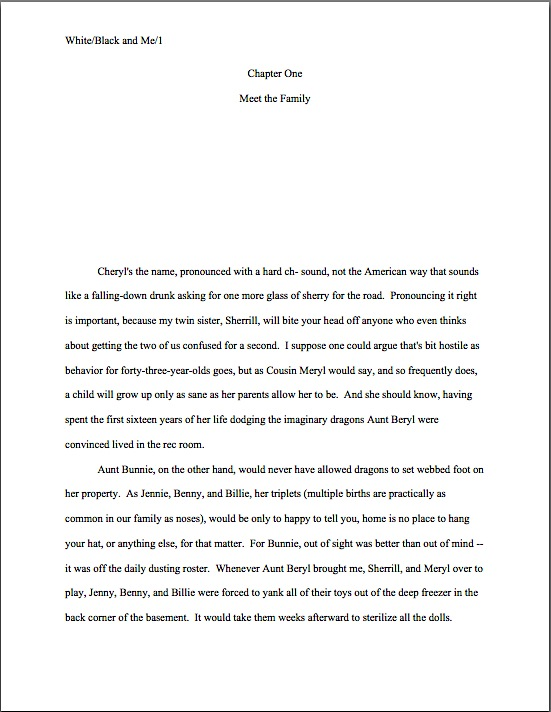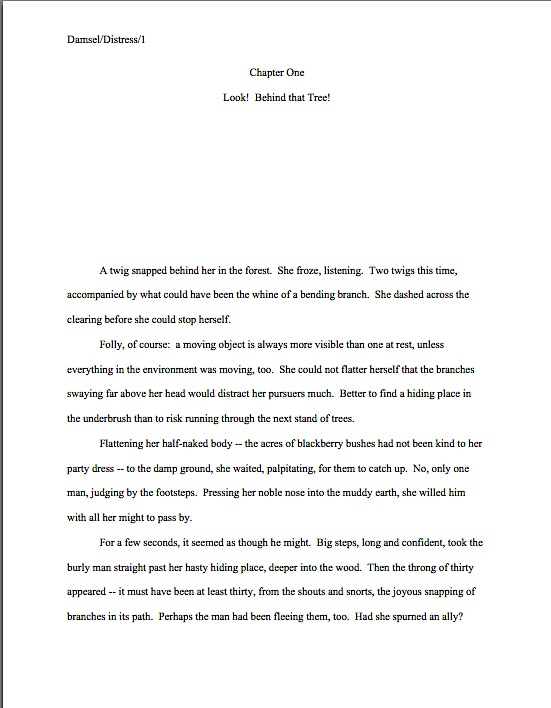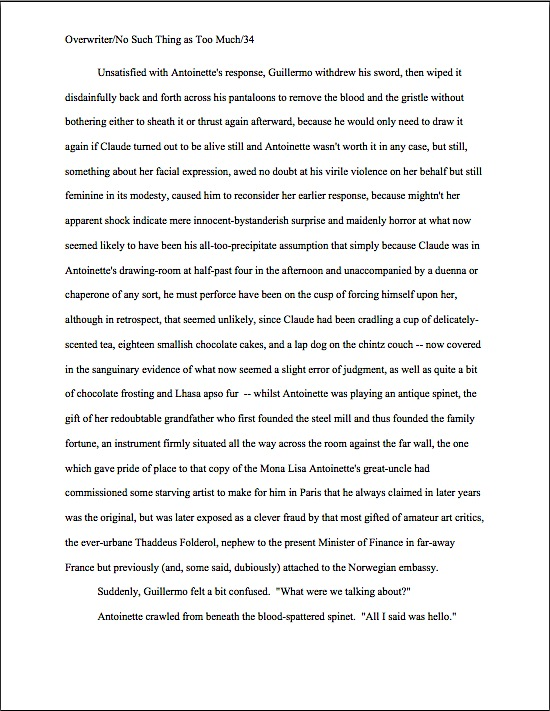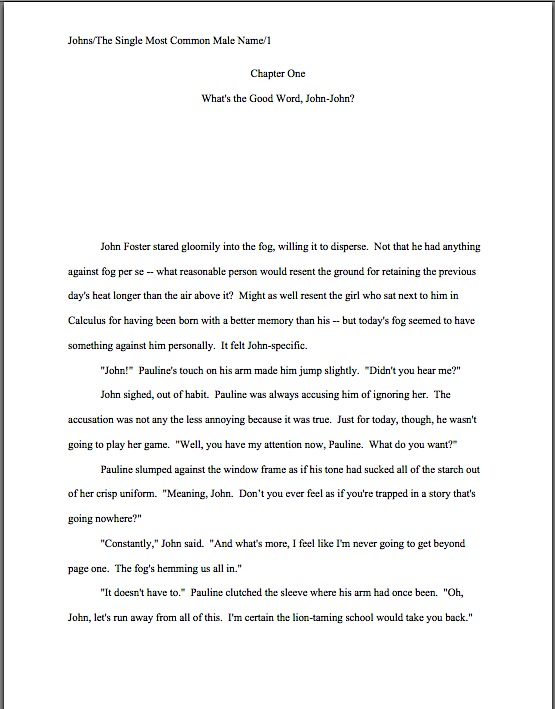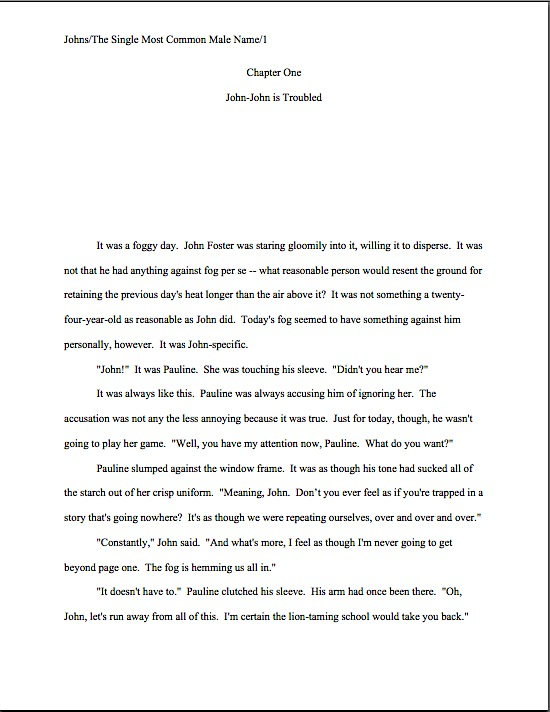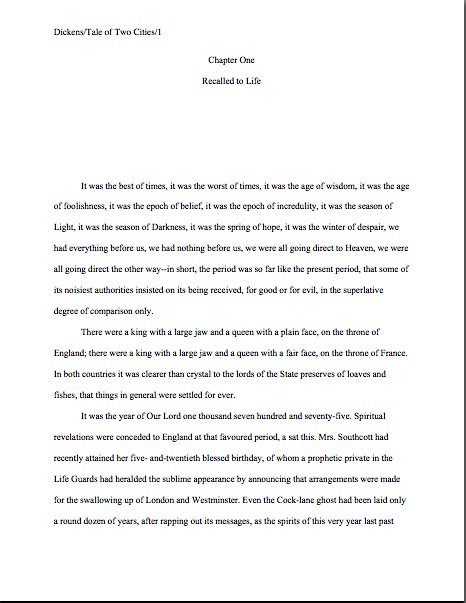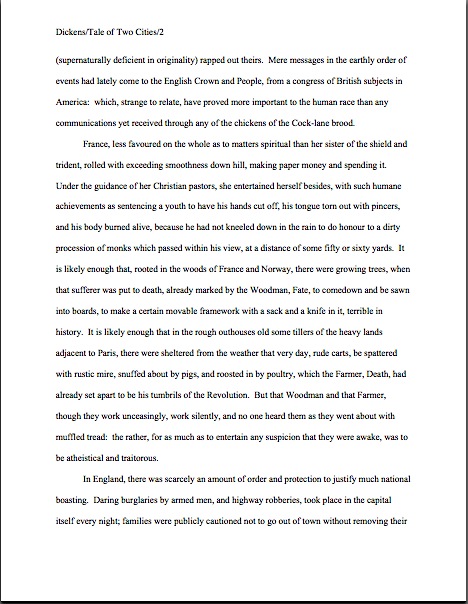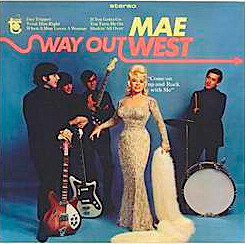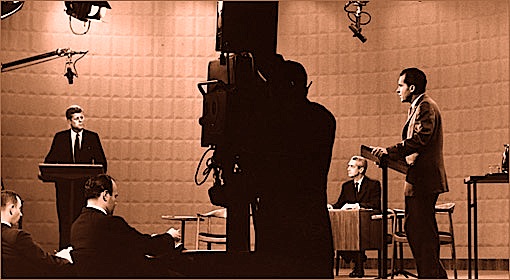At long last, I am proud to cut the ribbon on Queryfest, this year’s intensive foray into the ins and outs of all things query-related. I had intended to kick off the festivities on Monday, but as I may have mentioned last weekend, this walking on two legs thing is a whole heck of a lot more tiring than it looks. No wonder toddlers take so many naps.
That image seems appropriate, given how many aspiring writers spend any given day scratching their heads over that most basic of submission guideline requests: query with SASE. While that phrase might not seem particularly remarkable to those of us who deal with manuscripts for a living — or, indeed, to those of you who have been agent-hunting for long — to a writer brand-new to the quest, it can be downright mystifying.
“What is a query, other than a question?” these brave souls wonder. “What does that acronym stand for, and what about a SASE is too horrible to describe in fully fleshed-out English words?”
Perfectly reasonable questions, all — and surprisingly difficult to answer conclusively with even a rather thorough Internet search. As clever and incisive reader Elizabeth commented in our discussion last fall,
My queries are getting better as I go, but each expert I follow has different advice. How to choose which will work best for me and my book? It’s a quandary.
An excellent question, Elizabeth, and one I’m quite positive that many of your fellow queriers share. There’s certainly no shortage of how-to guides for would-be queriers out there; there are almost as many formulae out there for sure-fire query letters as there are professional givers of writing advice. Heck, substantial numbers of amateurs seem to post their notions, too, mostly phrased as though the advice in question were, if not actually something that any truly talented writer should have been born knowing, at least a precept to which any sane person seeking publication should adhere or risk being laughed out of literate society. Not to mention so self-evidently true and easy to follow that no explanation is required: simply stating the rule seems to be sufficient.
But they tend to be one-size-fits-all propositions, don’t they? Often, these doubtless well-meant query guides are simple lists of rules, light on explanation but heavy on dire warnings about what will happen to the unwary writer who does not follow them down to the last period.
I hate to burst anyone’s bubble, but better that you hear it from me than learn it from agonizing experience: the perfect query applicable to every set of agents’ eyes is as mythical as a unicorn and a centaur hitched to Apollo’s chariot. Frankly, generic queries don’t work, and even a relatively good boilerplate is going to start looking like a carbon copy to agents and their screeners within just a few months of its becoming popular with queriers.
I know, I know: that’s not what you’ve been hearing elsewhere. It’s true, nevertheless: no one, but no one can give you a fill-in-the-blanks query template that will work every time. Nor will following any given set of rules — yes, even mine — produce a query that will wow every single agent in the country.
How do I know that? Well, experience: the publishing world just doesn’t work like that. It values originality and individual writing style — why on earth would it even want to see identical (or close to identical) verbiage in every query letter?
But that’s not the only reason following a template is not a good idea. Because every book — and every category of book — is different, there is no such thing as a foolproof query formula into which any aspiring writer could simply plug her own information and hit SEND. And even if a query blueprint appropriate to any book, fiction or nonfiction, actually did exist, it wouldn’t necessarily be in your best interest to use it: literary agents are, contrary to popular opinion amongst aspiring writers, not automatons programmed to respond identically to everyone else in the publishing industry, but individual people with individual tastes.
Each of ‘em likes what they like, in short. That may seem like it makes your task harder, but actually, it can be empowering: you will be a much, much happier querier if you don’t fall into the exceedingly common querier’s trap of believing that any single agent’s response to your query is necessarily (a) the response any agent would have to it, (b) proof that the publishing industry’s rejecting your book’s concept, rather than the query letter that presents it, and therefore (c) just a handful of rejections means you should give up on the book.
Because the agenting world is diverse — and needs to be, in order to get the job done — (b) and (c) cannot be true. Even if agents did not harbor personal tastes (but they do), no one agent speaks for the entire industry. Furthermore, no agent in the world represents every kind of book, so the widespread belief that sending even the best-crafted query letter to any ten randomly-selected agents will engender ten identical responses is misguided. If nine of those agents don’t have solid track records representing books in your category, that never-fail boilerplate will, I can tell you now, fail with all nine.
And it may well fail with the tenth as well, if she’s just broken her heart by investing a year or two in fruitlessly trying to sell a book like yours. Or if she did sell that book three years ago, but the market has shifted. Or if she happened to have had a terrible honeymoon in the island paradise in which your story is set.
See earlier comment about individuals’ having individual tastes. Which is why (a) is unlikely to be true as well — but I’m getting ahead of myself, amn’t I?
That doesn’t mean, though, that those diverse-minded potential agents for your work don’t share certain expectations for what a query should be — or that there are not queries that would in fact be rejected by most of the agencies currently operating in this country. A professional query looks a certain way, contains specific information, and is, above all, a compelling argument for paying attention to both the book being queried and its author.
Which is why, as those of you who have been surfing the net in search of definitive answers may well have been wondering, agents, editors, and even freelance editors like me tend to be a trifle impatient with the oft-heard (but completely understandable, from a new writer’s perspective) complaint that it’s impossible for aspiring writer to tell what to do because there isn’t a single standard how-to list out there to which every authoritative source subscribes. From a professional point of view, the expectation underlying this complaint doesn’t even make sense: queries should be individuated for the book they are pitching, period.
So how could there possibly be a one-size-fits-all boilerplate? Or even a single list of rules? Every book — and every book category — is different; every agency has its own guidelines, and every agent has his own personal likes and dislikes. That being the case, why would it even be in agents’ best interest to subscribe to a single set of querying rules?
And where would they do it, the National Agency-Oppression Convention? The Society for the Simplification of the Deliberately Complex Field of Publishing? The Association for the Destruction of Opinion-Expression on the Internet?
Another commonly-held belief amongst aspiring writers that the pros tend to find mystifying: the notion that it’s the publishing industry’s job to track down every query advice-giving entity out there and bully it into conformity. It’s not as though the Internet Fairy is out there enforcing advice standardization across the Internet on any subject, or even fact-checking, for the most part.
Like everything else you find online, querying advice should be taken with a grain of salt. Yes, even mine.
Which is why, as those of you used to barked orders on what to do may well find surprising throughout Queryfest, I shall make a point to explain not only what your querying options are, but the pros and cons of each. With concrete examples, whenever possible. (And in case any of you missed last weekend’s announcement: if you would like to have your query letter used as an example in this series, here is how to go about submitting it. Who doesn’t like free professional query critique?)
So fair warning: what I’m going to be offering in Queryfest is not a one-size-fits-all boilerplate for querying success. That would be a waste of your time. Instead of just telling you what to say and how to format it, I’ve designed this series to help you create your own individualized query letter, perfect for your book and no one else’s.
How is this possible? For the same reason that agents and editors tend to be dismissive of the notion that it’s hard for a first-time querier to figure out what to do. From a professional point of view, it’s kind of surprising that even someone who believes every piece of advice he reads, from any source, wouldn’t pick up eventually that any query needs to contain the same basic elements: title, book category, whether it is fiction or nonfiction, brief description, credentials/platform for writing that particular book, polite sign-off, SASE if querying by mail.
Don’t worry, acronym-fearers; we’ll be defining that. I shall also be going over all of these requisite elements in enough detail that you can juggle them the manner best suited to present your book.
That’s going to require learning how agents think about books — and learning to talk about your manuscript in the terms that will make sense to them. Not to mention learning how to address your new and improved query to the right people. No query gets rejected faster than one pitching a book that the agent to whom it is addressed doesn’t handle.
If more than one statement in that last paragraph came as a surprise to you, you’re not alone. The overwhelming majority of queriers don’t learn nearly that much about how the publishing industry actually works before trying to capture its interest — and that’s a pity. In today’s hyper-competitive literary market, intelligent agents are not merely looking for good manuscripts by talented writers; they are seeking good manuscripts by talented writers who have rendered themselves easy to work with by having taken the time to learn how the publishing industry — wait for it — actually works.
In my experience, the most effective query letters are the alchemical effect of a combination of a well-written, professional letter, a writer who has taken the time to learn to talk about her manuscript in terms meaningful to the publishing industry, a book concept that happens to be appealing to the current literary market, and an open-minded agent with the already-existing connections to sell it successfully. Such a confluence doesn’t occur all that often — and it virtually never happens by accident.
“Heavens, Anne,” some prospective query-writers scoff, “if that’s your standard of good querying, I’m not surprised that you believe it doesn’t happen very often. As Elizabeth Bennet told Mr. Darcy after he listed his criteria for a genuinely educated woman, I do not wonder at your not knowing many; I wonder at your knowing any at all.”
Touché, skeptics, but not entirely true. As a matter of fact, I know scads of writers who produced such query letters by dint of persistent and intelligent effort.
How did they manage to pull off that difficult high dive? By coming to terms with the fact that there is no such thing as a single query letter ideal for every conceivable agent. There is, however, such a thing as a perfectly wonderful query letter specialized to appeal to a specific agent, as well as a slightly modified version personalized for another.
For the next couple of weeks, we’re going to be talking about cobbling together such a letter. Once you have the tools in your writer’s toolkit, you can use them to construct a whole flock of such letters, each tailored to an individual agent’s likes and dislikes and the expectations of your chosen book category.
Already, I hear martyred sighs rising across the English-speaking world. “But Anne,” easy-fix advocates protest, “that sounds like a whole heck of a lot of work, and I already resent taking time away from my writing to query agents. Couldn’t I, you know, just recycle the same letter over and over again?”
Well, you could, protesters. You could, I assure you, stop reading this right now, invest less than 20 seconds in a Google search of writing the perfect query letter, and come up with literally hundreds of one-size-fits-all templates that would make your life easier in the short run.
But I don’t think you should. Candidly, I think that the literally thousands of sources out there telling writers to follow this or that fool-proof formula are doing a serious disservice to those they advise, even when the actual elements of the advice they are giving is pretty good.
Why? Writers’ notorious aptitude for unwarranted self-blame, mostly; it’s driven literally millions of talented people into giving up on their books prematurely. The cycle usually runs a little something like this:
(a) Aspiring writer (let’s call him Ambrose, for the sake of storytelling convenience) finds an allegedly sure-fire query boilerplate online, in a book, in a class, and/or on the street somewhere.
(b) Rejoicing at the apparent ease of querying, Ambrose hurriedly copies and pastes his own information in to the template and sends it off to 1/5/127 agents.
(c) Since Ambrose’s query gives an accurate picture of neither his book nor his writing — how could it, when it consists almost entirely of one-size-fits all phrasing? — it gets rejected 1/5/127 times, usually via a form-letter rejection. (Hey, agents use templates, too; they’re real time savers.)
(d) Since Ambrose believes that the template he is using cannot possibly be the problem (it’s utterly foolproof, right?), he concludes that the only possible reasons he could have been rejected are:
(1) The book was lousy; somehow, the agent managed to sense that the writing was poor without reading any of it, or,
(2) The book was lousy, because the agent read the materials her website or agency guide listing said he could include with his query, or,
(3) The book’s concept was lousy, because that’s all the agent could possibly have judged from the query itself, but regardless,
(4) Rejection can only mean that he shouldn’t have queried with the book in the first place.
(e) Ambrose gets depressed for hours/weeks/months, far too much so to risk rejection again by sending out more queries, at least not anytime soon.
Recognize the pattern? Not from your own querying history, I hope, but from one or more of your writer friends?
What renders it sad is not solely the fact that Ambrose was rejected, but that his logic has a hole in it. He has not seriously considered the many, many other reasons an agency might have chosen to reject his query.
Such as, you ask? Well, the individual taste issues I mentioned above, of course. The culprit could also be having made the right case to the wrong agent, for instance, or having made the wrong case to the right agent. Or even having made the right case to the right agent at the wrong time; market demands — and thus agents’ needs — change all the time.
Rejection at the query stage can also be the result of the writer’s having formatted the letter oddly, or having failed to follow the directions on the agent’s website, agency guide listing, or Publishers’ Marketplace page. It could even have been a matter of having adhered to the standards set forth on one of these sources after the agency has changed its rules, or because the targeted agent no longer represents one or more of the types of book one of those sources says she does.
Rejection may, in short, come flying at an aspiring writer from any number of sources. As I think would be quite apparent if querying writers talked amongst themselves more about both rejection and the nuts and bolts of querying, rejection is not always the querier’s fault.
Nor, necessarily, is it the fault of the manuscript being queried. Most queries fail on a few very basic levels that don’t have much to do with the writing quality of the manuscript.
Yes, really: the vast majority of queries are rejected on the query letter alone. There’s a good reason for that: most of the query letters currently floating through the US Mail or flying via e-mail actually do deserve to be rejected by professional standards, but not because the books they are pushing are poorly written, poor concepts, or any of the million other reasons a manuscript might not be up to publication standard.
The most popular: unprofessional presentation, non-standard spelling and/or grammar, omitting to mention necessary information, hostile tone (again: yes, really), being sent to an agent who does not represent the kind of book presented, and, most notorious of all, the query’s obviously being a generic letter designed to be sent out indiscriminately to every agent currently operating in North America.
Agents have a pet name for the latter: they’re called Dear Agent letters, because some of them are so generic that they are not even addressed to a particular agent. Virtually without exception, US-based agents simply reject Dear Agent letters unread.
Also destined for the reject pile: queries sporting overused tricks to attract an agent’s attention — strategies, it may not astonish you to learn, often borrowed from one of the zillion guides out there, each giving ostensibly foolproof guidelines for how to construct a positively infallible query letter. Perhaps it is unfair, but nothing says generic query like the hip new lead-in that some hugely popular marketing guru was advising two years ago.
In my experience, simple works better than gimmicky — and certainly better than a boastful hard sell. Quite possibly because it is significantly rarer.
Although I am confident that my readers are too savvy to fall into the pitfalls that plague the average querier, the overwhelming majority of query letters agents receive are either uncommunicative, petulant in tone, just poor marketing — or (and I suspect you will have seen this coming. obviously copied from a standard one-size-fits-all pattern. We can do better than that, I think.
So let’s start at the basement and work our way up, shall we?
For those of you absolutely new to the art of approaching publishing professionals, a query letter is a 1-page (single-spaced, with 1-inch margins) polite, formal inquiry sent out to an agent or editor in the hope of exciting professional interest in the manuscript it describes. It is also, contrary to what most aspiring writers believe, a writing sample, so if it is poorly written, it’s toast, regardless of the strength of the book being offered.
It’s equally important to talk about what a query is not. A strong query should not be, contrary to popular practice, an occasion for either begging or boasting; you will want to come across as a friendly, professional writer who has done her homework. Nor is its goal to make the agent fall down on the floor, foaming at the mouth and crying, “I will die if I do not sign this author immediately!”
So what is its goal, you ask? To prompt the agent or editor to request pages. Period.
Let’s face it: no agent worth his 15% is going to sign a writer without reading any of her work. The sooner an aspiring writer accepts that, the sooner she can stop setting herself up for Ambrose-level disappointment. Going into the querying process with realistic expectations makes the process much, much easier on the ego.
So how does one go about eliciting the admittedly less dramatic but ultimately more respectful of your writing result, a direct request to read your manuscript? Without bells and whistles: an effective query introduces the book and the author to a prospective agent in precisely the terms the industry would use to describe them.
It is, in essence, the manuscript’s personal ad, intended to attract a compatible agent or editor to ask for a first date. To put it in terms more familiar to those of you followed my recent Pitchingpalooza series, the query is a written pitch, intended not to prompt an instantaneous offer to represent the book, but a request to read some or all of the manuscript or book proposal.
Ah, I just scared some of you with that comparison to pitching, didn’t I? “That’s all very easy to say, Anne,” point out those of you who find the prospect of sitting down face-to-face with a real, live agent about as appealing as hand-feeding a hungry wolf marshmallows by balancing them on your nose, “but you just got finished telling us that there’s no such thing as a one-size-fits-all formula. So how does a writer trying to break into the biz pull it off without a prescriptive plan that tells him precisely what to do at every step?”
Well, for starters, don’t feed wild animals that way. Are you trying to get mauled?
Once you toss aside the twin preconceptions that there is only one kind of perfect query letter and you are being expected to guess what it contains, constructing a good query letter introduction for your manuscript or query letter becomes quite a bit easier. It just requires a bit of advance preparation.
I felt you tense up again, but trust me, this is prep that you — yes, YOU — are uniquely qualified to do: figuring out what your book is about, who might want to read it, and why. Once you have figured out those elements, writing the query letter is a matter of constructing a document with elements you already have on-hand.
And that’s a comparative breeze, because instead of trying to chase an elusive wraith of an ideal or copying what worked for somebody else, you’re talking about a book you love. What’s more natural to a writer than that?
I hasten to add: being natural does not mean presentation doesn’t count. Your query needs to be businesslike without using business format (long-time readers, chant it with me now: documents without indented paragraphs appear illiterate to folks in the publishing industry), discussing your book project in terms that an agent might use to describe it to an editor.
Keep taking those nice, deep breaths; you are already well prepared to do this.
Don’t believe me? Okay, let’s take a gander at the information you would need to include, so you may see for yourself just how much of it you probably already have at your fingertips. Typically, a query letter consists of five basic elements:
1. The opening paragraph, which includes the following information:
* A brief statement about why you are approaching this particular agent
Hint: be specific. “I enjoyed hearing you speak at Conference X,” “Since you so ably represent Author Q,” and “Since you are interested in (book category), I hope you will be intrigued by my book” all work better than not mentioning how you picked the agent in the first place — or putting it as bluntly as, “I did a web search under Literary Agents, and your name popped up.”*The book’s title
Self-explanatory, I should hope, but you would be surprised how often queriers leave it out.*The book’s category
Where your book would sit in a bookstore? Most queries omit any mention of book category, but as in a pitch, it’s essential; no agent represents every type of book on the planet.*Word count (optional)
Actually, I never advise including this, unless the agency states specifically in its guidelines that it wants to see word count in queries. If they don’t ask, don’t include it.Why not? Because including the word count makes it easier to reject so many queries off the bat. If your work falls within the normal word count for your genre — for most works of fiction, between 80,000 and 100,000 words (estimated)– it won’t do you any harm include it, usually, but if it is longer, it’s not worth your while. (If you don’t know how to estimate word count — most of the industry does not operate on actual word count — please see the WORD COUNT category on the archive list at right.)
2. A paragraph pitching the book.
This is the part that stymies most queriers. Relax — we’re getting to it. For now, just bear in mind that this section should not be a paraphrase of your dedication page or a preview of the blurb you’d like to see on the jacket. Don’t praise your book; describe it.3a. A BRIEF paragraph explaining for whom you have written this book
What an agent will have in mind is an already-established target market of readers with a demonstrated interest in books like yours. Keep it realistic. Speculation that every woman/man/fly fisher in America will want to read your book will fall flat, for the exceedingly simple reason that any agent will already have seen this claim literally thousands of times.3b. and why your book might appeal to that demographic in a way that no other book currently on the market does.
If the demographic is not especially well-known (or even if it is; agents tend to underestimate the size of potential groups of readers), go ahead and include numbers. If you can compare your book to another within the same genre that has sold well within the last five years, this is the place to do it, but make sure to make clear how your book serves the target market differently and better.Don’t make the very common mistake, though, of having your book sound like a carbon copy of a current bestseller. You want your work to come across as unique.
4. An optional paragraph giving your writing credentials and/or expertise that renders you the ideal person to have written this book
Or, indeed, absolutely the only sentient being in the universe who could have pulled off this daunting task well. Here is where you present your platform — or, to put it in a less intimidating manner, where you explain why the agent should take you seriously as the author of this book.Actually, this paragraph is not optional for nonfiction, and it’s a good idea for everyone. Include any past publications (paid or unpaid) in descending order of impressiveness, as well as any contest wins, places, shows, semi-finalist listings, etc., and academic degrees. (Don’t worry: we shall be talking in depth about what degrees will and will not strike an agent as relevant for a fiction writer.)
If you have no credentials that may legitimately be listed here, don’t panic: just omit this paragraph. However, give the matter some serious, creative thought first. If you have real-life experience that gives you a unique insight into your book’s topic, include it. (It need not have been paid work.) Or any public speaking experience — that’s actually a selling point for a writer, since so few ever read in public before their first books have come out. Or even ongoing membership in an established writers’ group.
Anything can count, as long as it makes you look like a writer who is approaching the publication like a professional. Or like a person who would be interesting to know, read, and represent.
5. An EXTREMELY brief, polite closing paragraph
Here is where you thank the agent for her time, mentioning any enclosed materials (synopsis, first five pages, or whatever the agent lists as desired elements), calling the agent’s attention to the fact that you’ve enclosed a SASE (self-addressed stamped envelope), if you are querying via regular mail, and giving your contact information, if it is not already listed at the top of the letter. (If you can’t afford to have letterhead printed up, just include your contact information, centered, in the header.) Say you look forward to hearing from her soon, and sign off.There, that’s not impossible to pull off in a single page, is it?
Oh, dear, you’re tensing up again at the prospect of sitting down and writing it, aren’t you? Don’t panic: again, you may already have constructed — mentally, anyway — some or all of the constituent parts of a professional-looking query letter. You merely have to pull them together into a polite missive personalized for each agent you plan to approach.
A good way to start is to work on each element of the query individually, then snapping the pieces together. Trying to write the entire thing from beginning to end in one sitting, as most aspiring writers do, is not only more stressful than doing it piecemeal; it also tends to end in a rushed, panicked note tossed off quickly, just to have it done.
Don’t look at me that way; I know you’re in a hurry to pop that letter in the mail, but in the long run, taking the query piece by piece can save you time. Take a gander at how easily the building blocks snap together to make a log cabin — and if you’re having trouble reading the individual words, try holding down the COMMAND key and pressing + to enlarge the image:
You can pull that off without breaking a sweat, right?
I see quite a few lit-up eyes out there. “Um, Anne?” some wily sorts murmur, jotting down hasty notes. “What you’ve just shown looks suspiciously like a template. Mind if I borrow it wholesale and use it as such?”
Actually, I do, but not because I’m especially proud of having penned a sentence as immortal I enclose a SASE for your convenience, and I look forward to hearing from you soon. You should eschew copying anybody else’s query letter for the very simple reason that it is important that your query letter sounds like your book.
Not my book, or the creation of any of the small army of writing gurus out there, but yours. After all, you’re not seeking representation for a generic volume; you’re looking for the best agent for your particular manuscript.
So why on earth would you waste your time — and your manuscript’s potential — on a generic query letter? By the time we’re finished, the very suggestion that your book’s chances would be improved by utilizing boring, one-size-fits-all query copy is going to make you laugh out loud.
At least, I hope it will. Tune in tomorrow, campers, and keep up the good work!







 (1) As with the keynote and the elevator speech, most pitchers make the mistake of trying to turn the pitch proper into a summary of the book’s plot, rather than a teaser for its premise.
(1) As with the keynote and the elevator speech, most pitchers make the mistake of trying to turn the pitch proper into a summary of the book’s plot, rather than a teaser for its premise. (2) Most pitchers don’t stop talking when their pitches are done.
(2) Most pitchers don’t stop talking when their pitches are done. (3) The vast majority of conference pitchers neither prepare adequately nor practice enough.
(3) The vast majority of conference pitchers neither prepare adequately nor practice enough. (4) Most pitchers harbor an absurd prejudice in favor of memorizing their pitches, and thus do not bring a written copy with them into the pitch meeting.
(4) Most pitchers harbor an absurd prejudice in favor of memorizing their pitches, and thus do not bring a written copy with them into the pitch meeting. (5) Most pitchers don’t realize until they are actually in the meeting that part of what they are demonstrating in the 2-minute pitch is their acumen as storytellers. If, indeed, they realize it at all.
(5) Most pitchers don’t realize until they are actually in the meeting that part of what they are demonstrating in the 2-minute pitch is their acumen as storytellers. If, indeed, they realize it at all. (6) Few pitches capture the voice of the manuscript they ostensibly represent. Instead, they tend to sound generic or vague.
(6) Few pitches capture the voice of the manuscript they ostensibly represent. Instead, they tend to sound generic or vague.
 (8) Very few pitches include intriguing, one-of-a-kind details that set the book being pitched apart from all others.
(8) Very few pitches include intriguing, one-of-a-kind details that set the book being pitched apart from all others. (9) Most pitchers assume that a pitch-hearer will hear — and digest — every word they say, yet the combination of pitch fatigue and hectic pitch environments virtually guarantee that will not be the case.
(9) Most pitchers assume that a pitch-hearer will hear — and digest — every word they say, yet the combination of pitch fatigue and hectic pitch environments virtually guarantee that will not be the case. (10) Few pitchers are comfortable enough with their pitches not feel thrown off course by follow-up questions.
(10) Few pitchers are comfortable enough with their pitches not feel thrown off course by follow-up questions. (11) Far too many pitchers labor under the false impression that if an agent or editor likes a pitch, s/he will snap up the book on the spot. In reality, the agent or editor is going to want to read the manuscript first.
(11) Far too many pitchers labor under the false impression that if an agent or editor likes a pitch, s/he will snap up the book on the spot. In reality, the agent or editor is going to want to read the manuscript first. If the agent is interested by your pitch, she will hand you her business card and ask you to send some portion of the manuscript — usually, the first chapter, the first 50 pages, or for nonfiction, the book proposal. If she’s very, very enthused, she may ask you to mail the whole thing.
If the agent is interested by your pitch, she will hand you her business card and ask you to send some portion of the manuscript — usually, the first chapter, the first 50 pages, or for nonfiction, the book proposal. If she’s very, very enthused, she may ask you to mail the whole thing.








